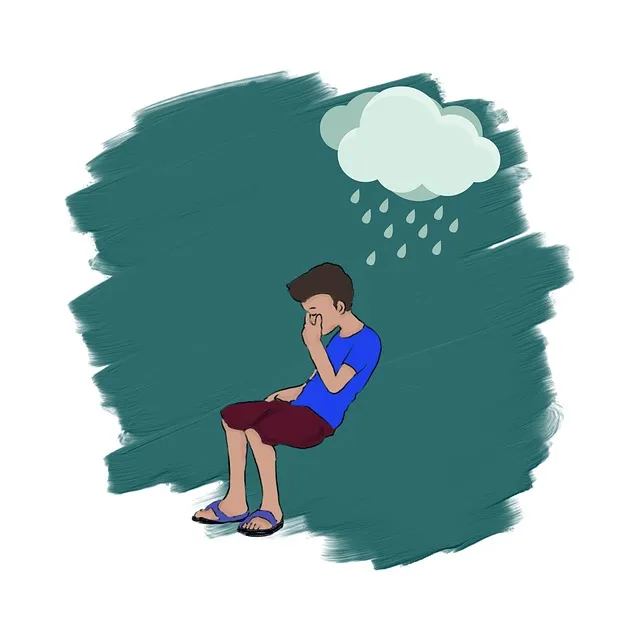Lone Tree Kaiser Permanente prioritizes comprehensive mental health coverage by conducting thorough risk assessments that identify vulnerabilities like past traumas, social determinants, and stigma. Their holistic program incorporates evidence-based strategies such as Social Skills Training and Self-Care Routine Development to enhance communication, build resilience, and promote long-term well-being. Through proactive Harm Minimization Plans involving ongoing monitoring and evaluation, they empower patients with tools for healing while fostering a culture of Inner Strength Development and Mental Health Awareness.
Risk assessment and harm minimization planning are essential components of any comprehensive healthcare strategy, especially within specialized areas like mental health. This article explores these critical processes, focusing on Lone Tree Kaiser Permanente’s approach to mental health coverage. We’ll delve into defining potential hazards and vulnerabilities, developing effective harm minimization plans, and the ongoing monitoring required for continuous improvement. Understanding these strategies is key to ensuring patient safety and optimal care in the complex landscape of mental healthcare.
- Understanding Risk Assessment: Defining Potential Hazards and Vulnerabilities
- Lone Tree Kaiser Permanente Mental Health Coverage: A Comprehensive Overview
- Developing a Harm Minimization Plan: Strategies for Effective Implementation
- Monitoring and Reviewing: Ensuring Continuous Improvement in Risk Management
Understanding Risk Assessment: Defining Potential Hazards and Vulnerabilities

Understanding Risk assessment involves identifying potential hazards and vulnerabilities within a given context, be it an organization or an individual’s life. In the case of mental health services, such as those offered by Lone Tree Kaiser Permanente, risk assessment is crucial for ensuring client safety and effective treatment. Potential hazards can include various forms of mental illness, past traumatic experiences, or social determinants of health that contribute to emotional distress. Vulnerabilities might refer to an individual’s lack of access to adequate mental health coverage, the presence of social isolation, or existing stigma surrounding mental illness—all of which can exacerbate existing conditions and hinder progress in recovery.
By defining these potential hazards and vulnerabilities, mental health professionals can develop tailored harm minimization plans. These strategies often include Mental Illness Stigma Reduction Efforts to foster a supportive environment, Empathy Building Strategies to enhance relationships between care providers and clients, and the application of Emotional Intelligence to navigate complex emotional landscapes. Such proactive measures aim to mitigate risks and promote positive outcomes in mental health management.
Lone Tree Kaiser Permanente Mental Health Coverage: A Comprehensive Overview

Lone Tree Kaiser Permanente offers a comprehensive mental health coverage that is designed to support individuals in achieving and maintaining their emotional well-being. This program incorporates various evidence-based techniques, such as Social Skills Training, to enhance communication and interpersonal relationships, which are crucial for overall mental health. The coverage also includes Self-Care Routine Development, empowering patients with tools to manage stress, improve resilience, and promote better mental health in the long term.
Through these initiatives, Lone Tree Kaiser Permanente aims to provide a holistic approach to mental healthcare, addressing not only acute issues but also fostering a sense of balance and stability for their patients. By integrating Emotional Well-being Promotion Techniques into their coverage, they ensure that individuals receive the support needed to navigate life’s challenges and thrive in their personal and professional spheres.
Developing a Harm Minimization Plan: Strategies for Effective Implementation

Developing a Harm Minimization Plan is a critical step in ensuring the well-being of individuals seeking mental health services, especially those with unique needs like those covered by Lone Tree Kaiser Permanente. This process involves a comprehensive risk assessment that goes beyond identifying potential hazards. It’s about proactively implementing strategies to mitigate risks and promote positive outcomes. Mental health professionals play a pivotal role here; they must be equipped with the right tools to assess not just symptoms but also the broader context of each patient’s life, including their environment, social support systems, and personal resilience.
One effective strategy is fostering Self-Esteem Improvement through therapeutic interventions. By enhancing self-worth, individuals can better navigate challenging situations and make informed decisions regarding their mental health. Additionally, integrating practices like Mindfulness Meditation into treatment plans has proven beneficial in stress reduction and emotional regulation. These approaches not only complement risk assessment but also empower patients to actively participate in their healing journey.
Monitoring and Reviewing: Ensuring Continuous Improvement in Risk Management

Monitoring and reviewing processes are integral to effective risk assessment and harm minimization planning. It involves a continuous cycle of evaluation, learning, and adaptation, ensuring that risk management strategies remain robust and up-to-date. At Lone Tree Kaiser Permanente, for instance, mental health coverage has seen significant enhancements through this approach. By regularly monitoring patient outcomes, treatment effectiveness, and staff feedback, the organization can identify areas for improvement in their mental health services.
This proactive strategy fosters a culture of Inner Strength Development and Mental Health Awareness among both patients and healthcare providers. Regular reviews enable them to refine practices, implement evidence-based interventions, and adapt to evolving patient needs. Moreover, it encourages a Confidence Boosting environment where lessons learned lead to better decision-making, ultimately enhancing the quality of care provided by Lone Tree Kaiser Permanente.
Risk assessment and harm minimization planning are essential components of ensuring a safe and supportive environment, particularly within healthcare settings like Lone Tree Kaiser Permanente. By understanding potential hazards and vulnerabilities, organizations can develop comprehensive strategies, such as the implementation of effective harm minimization plans. Regular monitoring and review processes are critical to ensure continuous improvement in risk management, ultimately enhancing patient care and outcomes. The integration of these practices, including a focus on Lone Tree Kaiser Permanente mental health coverage, underscores the commitment to providing a secure and positive healthcare experience for all.






